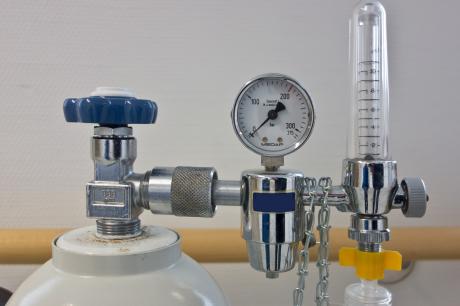Tiny bits of molecular “trash” found in circulating blood appear to be good predictors of cardiovascular disease and untimely death, say researchers at Duke University Medical Center.
The discovery, published online in the April issue of the journal Circulation Genetics, comes from the largest study of its kind for cardiovascular disease, and is the first to identify specific metabolic profiles associated with coronary artery disease, heart attacks and death among patients who have undergone coronary catheterization.
The Duke study analyzed metabolites, the molecular debris left over after the body breaks food down into energy sources and building blocks of cells and tissues.
Scientists believe metabolites may be useful in diagnosing disease, said Svati Shah, MD, MHS, a cardiologist in the Duke Heart Center, the Duke Center for Human Genetics and the lead author of the study. But the tiny molecules are notoriously hard to identify, quantify and characterize.
Shah, a member of the Duke Global Health Institute, has been studying metabolic signatures in heart disease for several years and led earlier research showing that metabolic profiles associated with early-onset coronary artery disease can be inherited.
Shah and William Kraus, MD, professor of medicine at Duke and the senior author of the study, wanted to know if they could isolate and identify particular metabolites associated with coronary artery disease.
They began their investigation with information in Duke’s CATHGEN biorepository which holds health records and blood samples from nearly 10,000 patients who had come to Duke over the past eight years for catheterization.
Collaboration with Christopher B. Newgard, PhD, director of Duke’s Sarah W. Stedman Center for Nutrition and Metabolism, allowed Shah, Kraus and others to accurately quantify and characterize the metabolites.
Researchers selected 174 patients who had experienced early-onset coronary artery disease (CAD) and compared them to 174 controls who had undergone catheterization but who were not found to have CAD. Using a panel of 69 metabolites previously identified as potentially involved in the development of CAD, they examined the metabolic profiles in both groups.
“We found two sets, or clusters of metabolites that seemed to differentiate between the two groups,” says Shah.
Next, they tested the two sets of metabolites to see if they could differentiate between patients of any age who had CAD and those who did not. Again, the two sets of metabolites were able to discriminate between the two groups.
In order to evaluate the ability of the metabolites to predict risk of heart attack or death, the researchers also created an “event group” comprising 314 patients from all groups who suffered a heart attack or death during a follow-up period of almost three years. They compared metabolic profiles between those who suffered a heart attack or death with those who did not.
Using multiple analytic and statistical methods, they found two factors that were clearly associated with coronary artery disease and one factor that predicted greater risk of heart attack or death among patients with coronary artery disease.
“When we added these biomarkers to traditional clinical risk models, we found that they increased the accuracy of projected risk,” says Shah.
Read the full press release by Duke Medicine News and Communications.



